The happiest day of your life should be filled with laughter, champagne toasts, romance, close friends and family. What should not be there are stress, negativity, disorganization and chaos. We offer advice, tips and a handy-dandy pros-cons list to help you plan and enjoy your wedding day.
1. Cha-Ching, Cha-Ching
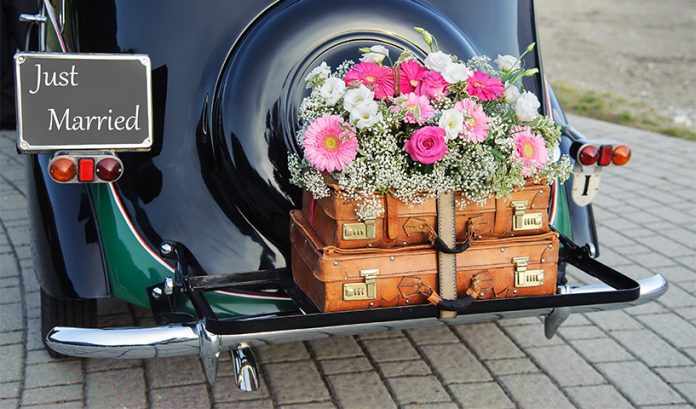
To make a couple’s day come to fruition, a wedding budget is where dream meets reality. Before any planning occurs, a realistic budget must be set – and you need to determine if there’s any wiggle room upward. Be warned: if there is, you’ll probably use it.
Many online tools, such as theknot.com, can help. Using a professional planner is another way to optimize every dollar spent.
When figuring out the budget, beware hidden costs, like gratuities, rental fees, pre-wedding parties and gifts for the wedding party. Many couples may open a rewards credit card for wedding expenses to earn points and track spending in one place.
Personal tastes are also reflected in cost-cutting measures, such as mismatched table settings, registry choices or a simple, inexpensive cake, bedecked in edible flowers.
2. Value Venue
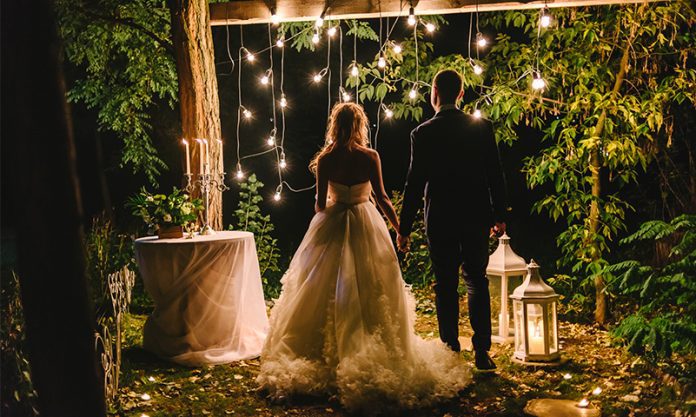
Once a budget is established, choosing a venue early is advised, because many are booked a year or more in advance. Some couples choose a non-traditional place or an off-season date (in the dead of summer or winter) to save money and eschew tradition.
Think outside the box. There might be a particularly meaningful location, like a public park or zoo, that facilitated your first date. Many couples choose a location where both the ceremony and reception can take place, like a private home with a large backyard.
If you’re stuck between several venues, experts suggest starting a comparative spreadsheet with categories like location, capacity, date availability, type, layout, cost, catering restrictions and general vibe.
3. Let It Bloom
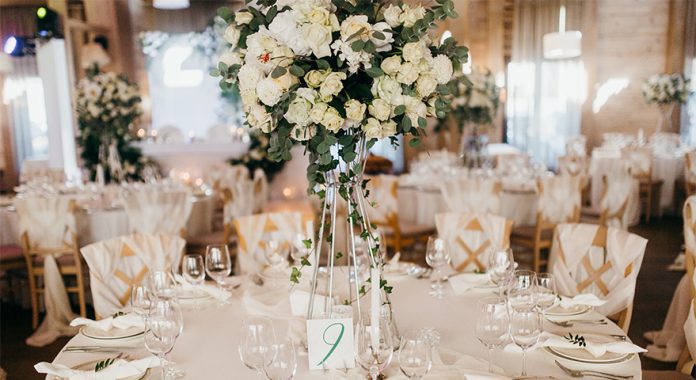
Your floral choices can influence the overall color scheme and ambiance of the day. Remember, flowers are more than a few bouquets – think boutonnières, decor and even a flower crown or two if you’re so inclined.
In-season flowers are the best value. Trends include hanging flowers from the ceiling or beams and the inclusion of all shades of purple, from violet and periwinkle to merlot and champagne. Other colors in fashion are silver, chrome and elements of glitter added to floral arrangements, while less popular hues this year are gold and rose gold. Bright, deep colors are more in vogue than rustic or pastel arrangements. Bringing nature indoors with tailored greenery in all seasons is seen with bouquets, including dahlias and ranunculus.
4. Dress to Impress
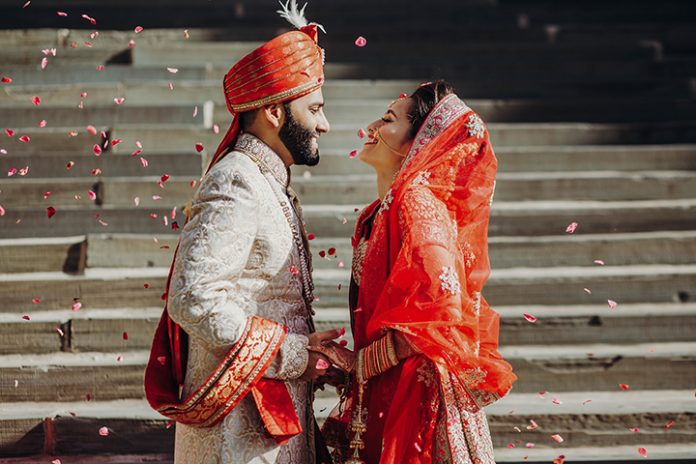
The most elegant and desired wedding dress shapes trending this year reflect the traditional elements of last year’s royal nuptials of Meghan Markle and Prince Harry. Other popular shapes include the always flattering A-line, as well as body-hugging, sheath-style and short-skirted frocks. Chic bridal jumpsuits are also trending.
Today’s brides also like personal statements, with many avoiding traditional white and instead opting for shades of lavender.
Whatever style you choose, go to the dress shop with research in hand so you know the basic style choices that suit you. Don’t forget to bring photos and a pair of shoes similar to the ones you plan to wear on the big day.
5. Piece of Cake
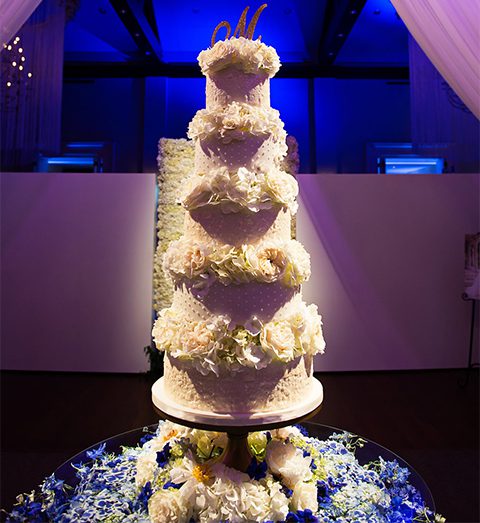
The wedding cake can help to tell the couple’s love story – and a “statement” cake is popular and can involve an eight-layer confection of chiffon sponge with crème Chantilly or stylized stacks of dyed meringue. Anything the imagination can conceive can be done … if you give your skilled baker clear instructions and plenty of time (three months for prep, preferably).
Current strategies for some budget-conscious couples are a wedding cake switcheroo, where a rented or display cake is shown, but guests are served slices of sheet cake. Some couples don’t care for cake and go with pies or other favorite desserts, like tarts or frozen treats. Others present dessert as a self-serve bar or a piled-up tower of s’mores, sundaes, pies, cheese, fruit or even pastries.
6. Grub Hubbub

Today’s couples want opportunities for conversation among guests, so the wedding meal is tailored in many cases for a family-style service, with the continuing trend of farm-to-table and organic cuisine. Time of day dictates what sort of spread to provide, and brunch weddings are on the rise as a way to serve light, elegant fare.
Dining options include a sit-down dinner, hors d’oeuvres and light snacks or a casual buffet. For some, the menu choices reflect the couple’s ethnic heritage, and many choose family favorites, like a pig roast or shrimp boil.
Many couples hire a food truck or offer a large “grazing bar” of their personal favorites, like tacos or burgers. Another trend is making everything miniature, such as shot glasses of soup and elegant, wee bites of food.
7. This vs. That

Your wedding is full of choices that can change the tone and ambiance of the day. Here are some pros and cons of several options.
 Open Bar vs. Beer/Wine
Open Bar vs. Beer/Wine
Most couples (barring those with personal or religious beliefs against it) must decide how much alcohol will flow at their celebrations. A beer/wine-only wedding is often more economical than an open bar and can prevent over-intoxication … as can a cut-off time, after which only soft drinks and coffee are served.
Open bars are a crowd favorite, but costs – and intoxication – soar. Some may consider it cheap to forgo an open bar … while others believe as long as alcohol is provided, hosting duties are met. You might bypass the issue with a brunch or daytime wedding. (Mimosas, anyone?)
Destination vs. In-Town
If you want an intimate ceremony with only your nearest and dearest as guests, a destination wedding might be the right choice. As a bonus, this is often a once-in-a-lifetime opportunity for an extended family reunion/vacation. Cons include the inevitable angry relatives and friends left off the invitation list and the cost of flights and accommodations.
If you want a big celebration, don’t expect hundreds of acquaintances to fly to a remote location for your nuptials; keep it in-town. You get to invite more people, but that also means a larger venue with more decorations, food and booze.
 Band vs. DJ
Band vs. DJ
Unless a celebrity is chosen as the announcer, DJ-provided music is usually less expensive than a several-piece live band. Creating a wedding playlist is often a fun and stress-relieving activity that you can do with your spouse-to-be, friends and family.
Bands bring to a wedding an entirely different vibe, which you might crave. Ultimately, it’s up to you because a band leader or DJ can act as the master of ceremony and control the energy of the reception. With either, get your required songs and musical preferences specified in the contract.
Hiring a Planner vs. Going It Alone
As long as your personality meshes well with your wedding planner, she or he can reduce your stress drastically. Planners are especially helpful for those with children, time-consuming careers or an inability to organize. Many venues offer on-site planning services for the month or day of the wedding.
Going it alone, while undoubtedly more work, might be right for couples on a tight budget or those who prefer to work independently.
 Keeping vs. Tossing Traditions
Keeping vs. Tossing Traditions
Modern couples choose which wedding traditions work for them … and nix the ones that don’t. Traditions often getting the ax this year include the often unintentionally salacious finding of the garter and the bouquet toss (to avoid spotlighting single friends). Other traditions less-observed now are formal first dances, white wedding gowns, large bridal parties and the use of Richard Wagner’s “Bridal Chorus” (or “Wedding March”). The bottom line is there’s no wrong way to incorporate traditions. If you prefer to keep them all, go for it … but the sky’s the limit if you want something different.
 Uniform vs. Individual Bridesmaid Dresses
Uniform vs. Individual Bridesmaid Dresses
It’s up to the bride to choose the bridesmaid dresses. The same-style approach keeps it simple and avoids clashing colors, but different hues of the same color and varying dress shapes can be more aesthetically pleasing. Another bonus of varying gowns is that bridesmaids with different body shapes can find dresses that flatter them. Asking the party members what they prefer can help you decide.
 Staying in Wedding Garb vs. Changing for the Reception
Staying in Wedding Garb vs. Changing for the Reception
Many a bride changes out of her wedding dress into something shorter and more comfortable for the reception, especially if she plans to dance or mill about. This allows for a fun outfit change that can re-energize your evening.
On the flip side, you’ve spent time and money chasing down the perfect dress that you’ll only wear once. Perhaps it’s better to utilize it for every moment of your magical day.
A compromise could be wearing comfortable undergarments and a bringing a change of shoes, or having an adjustable gown as a quirky, stylistic opportunity to personalize the day.
8. Plan for Anything
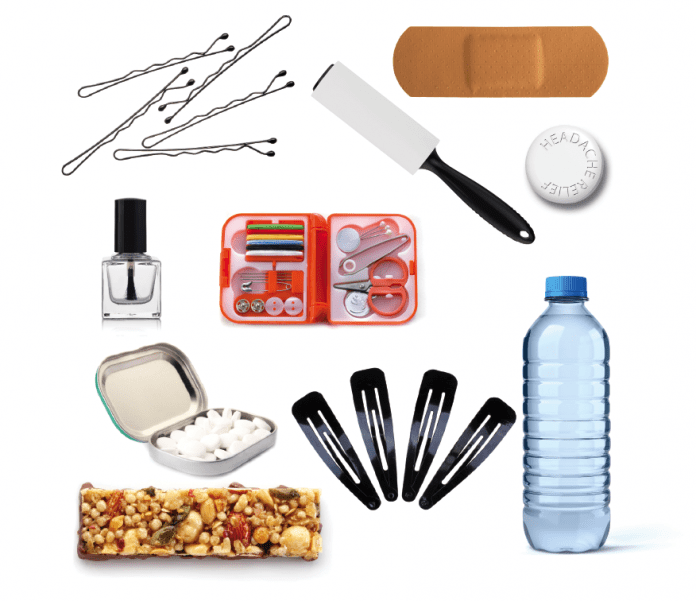
Before disasters strike, have a pack of essentials.
Thinking ahead and creating a wedding emergency kit can keep both the bride and groom cool, calm and collected on the big day. This could be the perfect job to assign to a type-A wedding party member or organized relative.
Essentials should include: spare dark socks for the groom and his party; a small sewing kit, super glue and clear nail polish to stop stocking runs; snacks, tissues and a first-aid kit with headache remedies and bandaids; breath mints, antiperspirant and cologne; and hair supplies, including dry shampoo, a curling iron, extra clips, hair spray and bobby pins.
Other items you may not think about are scissors to remove tags, antacids, stain-removal supplies, a hand mirror, moisturizers, nail polish in the bride’s shade and feminine hygiene supplies.
Make sure to also have an accessible list of important phone numbers, plus mobile-phone chargers and static-cling spray. It’s a nice touch to include lavender oil to sniff for relaxation and drinking straws to help keep lipstick in place.
One more touch that you’ll be glad to have if you need it: an iron or steamer to get rid of wrinkles – just make sure the fabric can take the heat.






















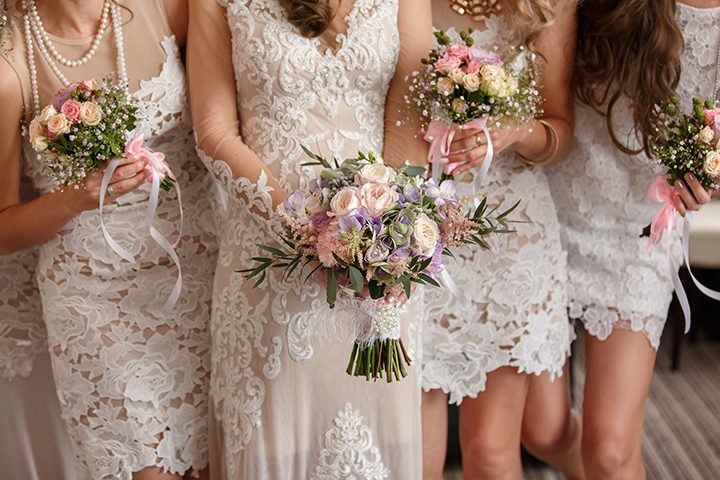
 Open Bar vs. Beer/Wine
Open Bar vs. Beer/Wine Band vs. DJ
Band vs. DJ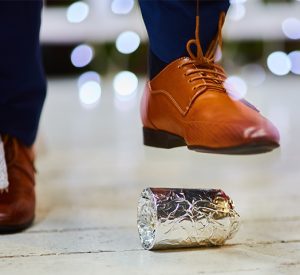 Keeping vs. Tossing Traditions
Keeping vs. Tossing Traditions Uniform vs. Individual Bridesmaid Dresses
Uniform vs. Individual Bridesmaid Dresses Staying in Wedding Garb vs. Changing for the Reception
Staying in Wedding Garb vs. Changing for the Reception